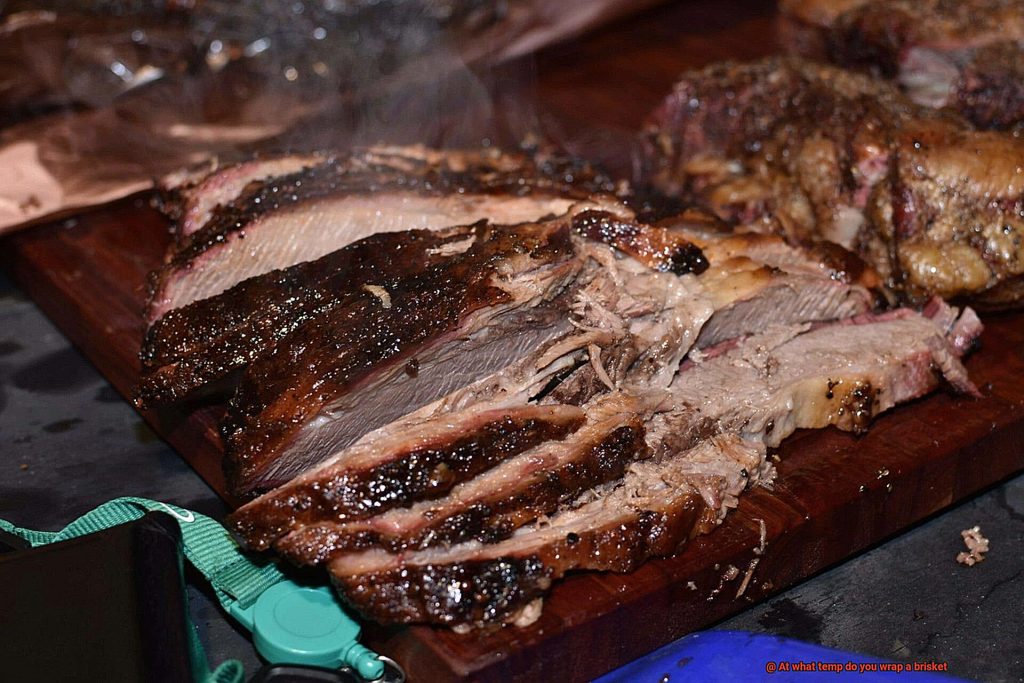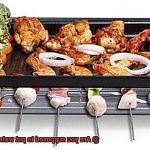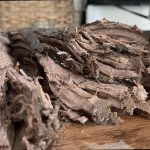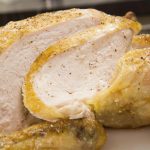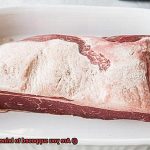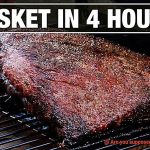Imagine the heavenly smell of a perfectly seasoned and smoked beef brisket, cooking low and slow in your backyard. Your mouth waters as you eagerly await the moment when you can sink your teeth into that juicy, tender meat. But wait – at what temperature should you wrap your brisket? This question has been debated by pitmasters and meat enthusiasts for ages. Some say to wrap it in foil or butcher paper at a specific temperature, while others prefer the natural bark without wrapping.
But don’t fret, because we’ve got you covered with the ultimate guide on when to wrap your brisket. We’ll break down the process step-by-step with tips and tricks from experts in the field.
First things first, let’s dive into the science behind cooking a brisket and what happens during each stage of the process. Then, we’ll explore different wrapping methods to suit your personal preferences – whether you’re a foil fanatic or butcher paper buff.
Next up, we’ll reveal the optimal temperature range for wrapping your brisket. This is crucial for keeping that delicious meat moist and succulent without drying out or becoming too tough.
So if you’re ready to take your brisket game up a notch, keep reading for our comprehensive guide on when to wrap that bad boy.
Contents
What is Brisket?
Brisket, a cut of beef from the chest of the cow, is known for its tough and chewy texture, making it an excellent choice for slow-cooking methods like smoking or braising. In recent years, brisket has gained popularity worldwide, but it remains a staple in Texas-style barbecue.
A whole brisket consists of two parts: the flat and the point. The leaner flat and the fattier, more flavorful point require different cooking times and temperatures. Therefore, it’s essential to separate them before cooking to achieve the perfect cook.
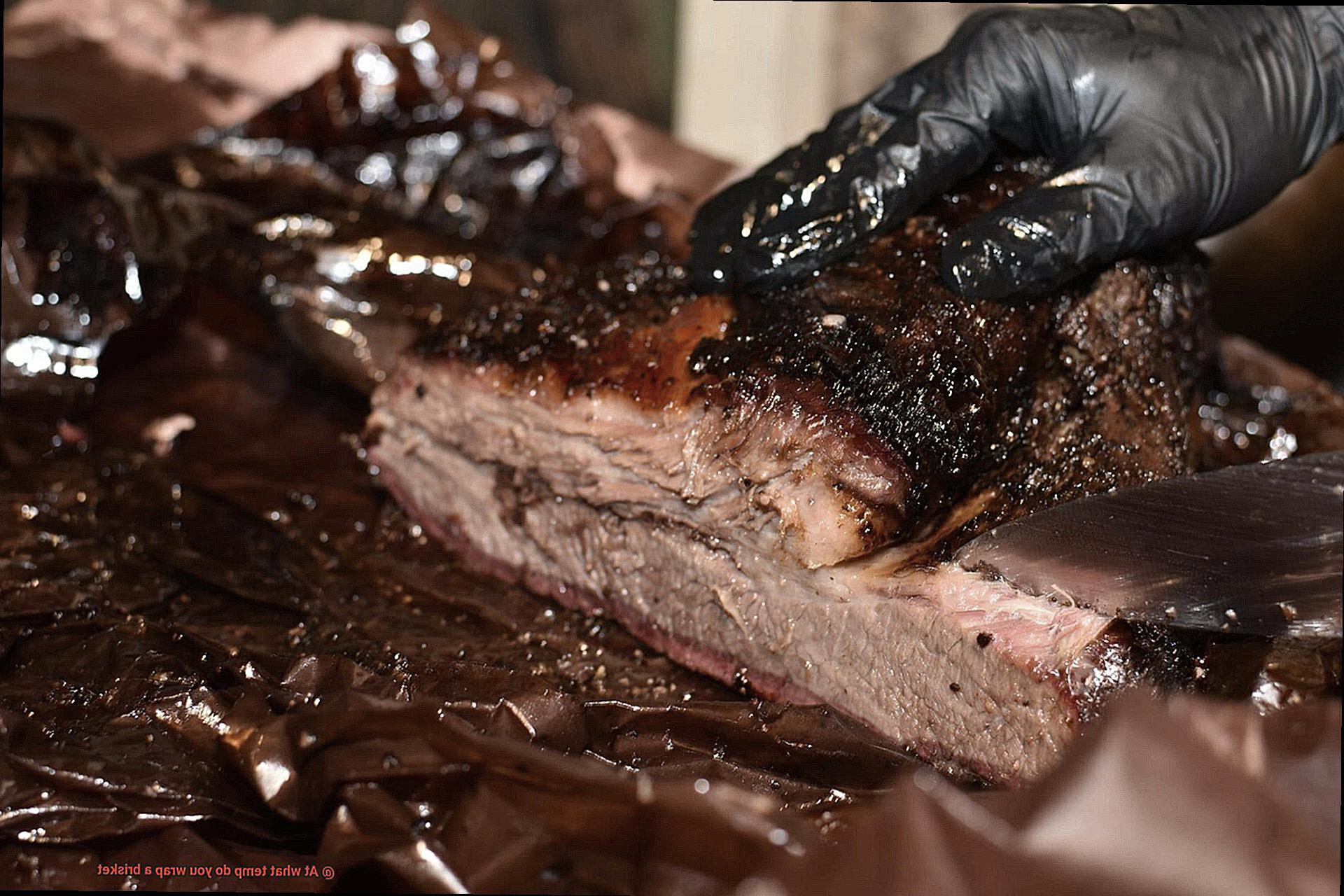
Before cooking, brisket is typically seasoned with a dry rub that can vary according to personal preference. Commonly used ingredients include salt, pepper, garlic powder, and paprika. Once seasoned, the brisket is cooked low and slow until it reaches an internal temperature of around 160-170°F.
Pitmasters often use a technique called wrapping, where they wrap the meat in foil or butcher paper to help tenderize and lock in moisture. There’s debate among experts about when to wrap the brisket – some prefer to do it after the meat has absorbed enough smoke flavor at around 160-170°F to prevent the bark from becoming too dark or burnt. Others wait until around 180-190°F to allow more time for the meat to develop a flavorful bark.
Ultimately, when it comes to wrapping a brisket, personal preference and specific cooking conditions matter. It’s crucial to monitor the internal temperature using a reliable thermometer and adjust cooking time and temperature accordingly.
What are the Benefits of Wrapping a Brisket?
Smoking a brisket is an art form that requires patience, skill, and knowledge. Among the many techniques used by pitmasters to achieve the perfect cook, wrapping the brisket is a popular one. And for good reason – there are several benefits to wrapping a brisket while smoking it.
Firstly, wrapping a brisket helps to retain moisture. As the meat cooks, it naturally releases steam which can dry it out and leave it tough and chewy. But by wrapping it in foil or butcher paper, this moisture is trapped and reabsorbed back into the meat resulting in a juicy and tender final product. It’s like creating a little sauna inside the wrap that keeps the meat moist and succulent.
Another benefit of wrapping is that it can speed up the cooking process. After several hours of cooking, the brisket will eventually reach a point where it stalls in temperature, meaning it stops increasing in temperature for several hours. This can be frustrating for those wanting to serve their brisket at a certain time. However, by wrapping the brisket, the heat is trapped and can cause it to power through the stall quicker. It’s like giving your brisket a boost of energy to get it over the hump.
Lastly, wrapping can also help to infuse flavors into the meat. By adding ingredients such as butter or beef broth to the foil or paper before wrapping, these flavors will be absorbed by the meat as it cooks. It’s like marinating your brisket from the inside out.
What Temperature Should You Wrap a Brisket?
And when it comes to wrapping your brisket, timing is everything. So, what’s the ideal temperature to wrap your brisket?
Most pitmasters agree that wrapping your brisket when it reaches an internal temperature of around 160-170°F is the way to go. However, this can vary depending on the size of your brisket and the cooking method used. So, keep a close eye on your meat’s internal temperature throughout the cooking process.
While some pitmasters prefer to wait until their brisket hits a higher temperature before wrapping, others argue that doing so can result in dry, tough meat. Wrapping too early, on the other hand, can cause the meat to steam and lose its bark.
Finding the perfect balance between cooking time and moisture retention is crucial. A good rule of thumb is to monitor the appearance of your meat as well as its internal temperature. When you notice that your brisket has developed a nice bark on the outside but still retains its moisture on the inside, it’s time to wrap.
When Should You Wrap a Brisket?
Wrapping your meat is a crucial step in the cooking process, but timing is key. As an expert on all things brisket, let me guide you through the ins and outs of when to wrap.
First, ensure your brisket has developed a beautiful bark on the exterior. This typically takes 4-6 hours of smoking, depending on the size of your meat and smoker temperature. Once your brisket reaches an internal temperature of around 160-170°F, it’s time to wrap it up.
Why wrap? Wrapping seals in moisture, speeds up cooking, and tenderizes the meat by breaking down those tough connective tissues and rendering the fat. Additionally, the wrap prevents the brisket from drying out during the rest of the cooking time.
When it comes to wrapping materials, butcher paper, aluminum foil, and peach paper are popular options. Each has its benefits and drawbacks, so experiment to find what suits your preferences.
But wait, some pitmasters don’t wrap at all? Yes. The “Texas-style” approach can result in a crispy and smoky exterior but can also lead to a drier final product if not done correctly. Unless you’re an experienced pro, I recommend sticking with wrapping.
Techniques for Wrapping a Brisket
And while different pitmasters may have their own preferences when it comes to wrapping, there are some general techniques that can help you achieve the best possible results.
First off, let’s address the “to wrap or not to wrap” question. Some pitmasters swear by the “Texas crutch” method of not wrapping at all, while others believe that wrapping can help seal in moisture and speed up cooking time. It ultimately comes down to personal preference and desired outcome, so don’t be afraid to experiment and find what works best for you.
If you do decide to wrap your brisket, there are a few materials to choose from. Butcher paper is a popular option that allows for some breathability while still providing protection from the heat. Aluminum foil provides a tighter seal and helps retain moisture but can affect the texture of your bark. Some pitmasters even use a combination of both for ultimate protection and flavor infusion.
Timing is key when it comes to wrapping. Wrapping too early can result in a tougher bark, while waiting too long can lead to dry and overcooked meat. Generally, pitmasters will wrap their brisket once it reaches an internal temperature of around 160-170°F, also known as the stall. This is when the meat’s temperature plateaus due to evaporating moisture, and wrapping can help push through and speed up cooking time.
But no matter when you decide to wrap your brisket, make sure you do so tightly to prevent any leaks or gaps that could cause moisture loss. This is crucial in keeping your meat juicy and tender throughout the cooking process.
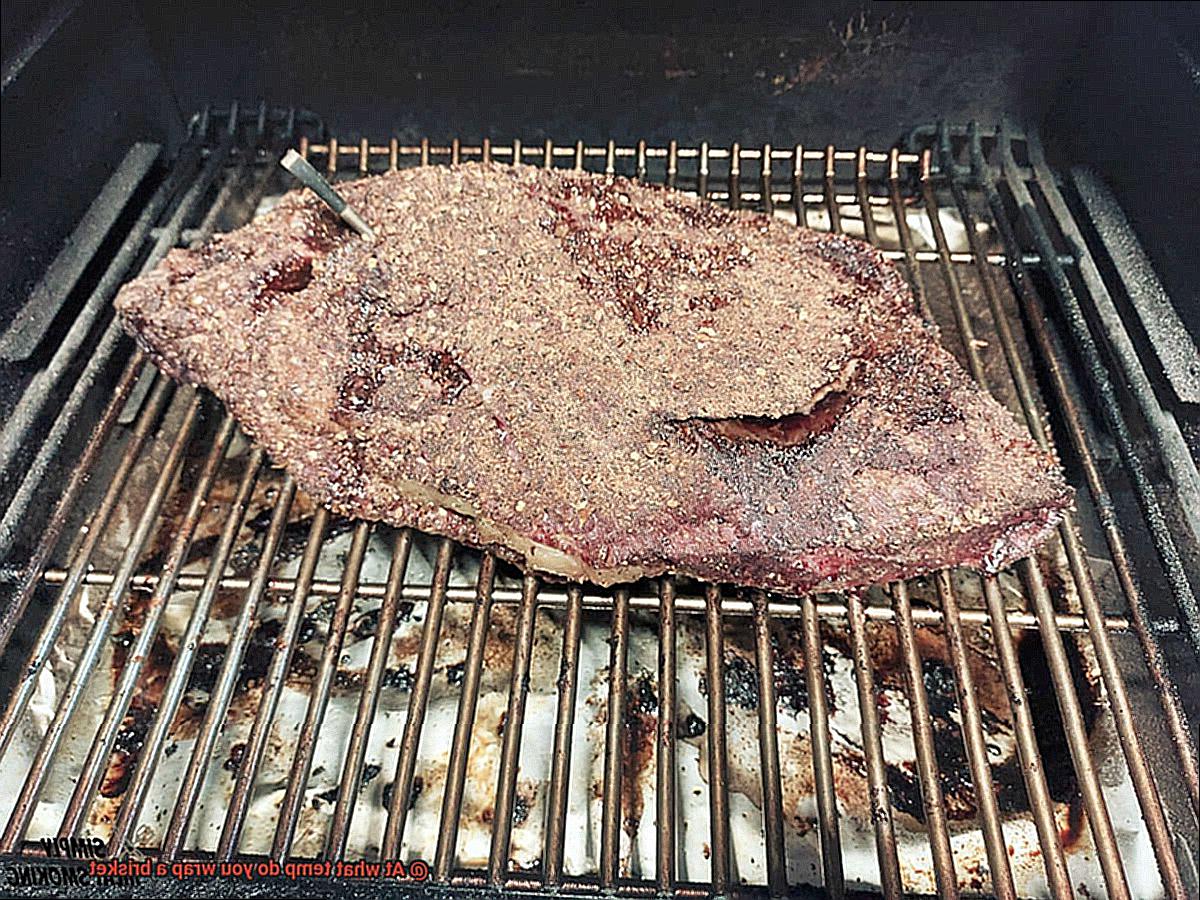
In summary, here are the general techniques for wrapping a brisket:
- Determine whether you want to wrap or not based on personal preference and desired outcome.
- Choose your wrapping material – butcher paper or aluminum foil.
- Wrap your brisket once it reaches an internal temperature of around 160-170°F to push through the stall and speed up cooking time.
- Wrap tightly to prevent any moisture loss.
- Continue cooking until your brisket reaches an internal temperature of around 200-205°F for optimal tenderness.
Tips for Wrapping a Brisket
Brisket is a tough cut of meat that requires a lot of patience and skill to cook properly. Wrapping the brisket is a technique that many pitmasters use to help tenderize the meat and lock in moisture. Here are some tips to keep in mind when wrapping a brisket:
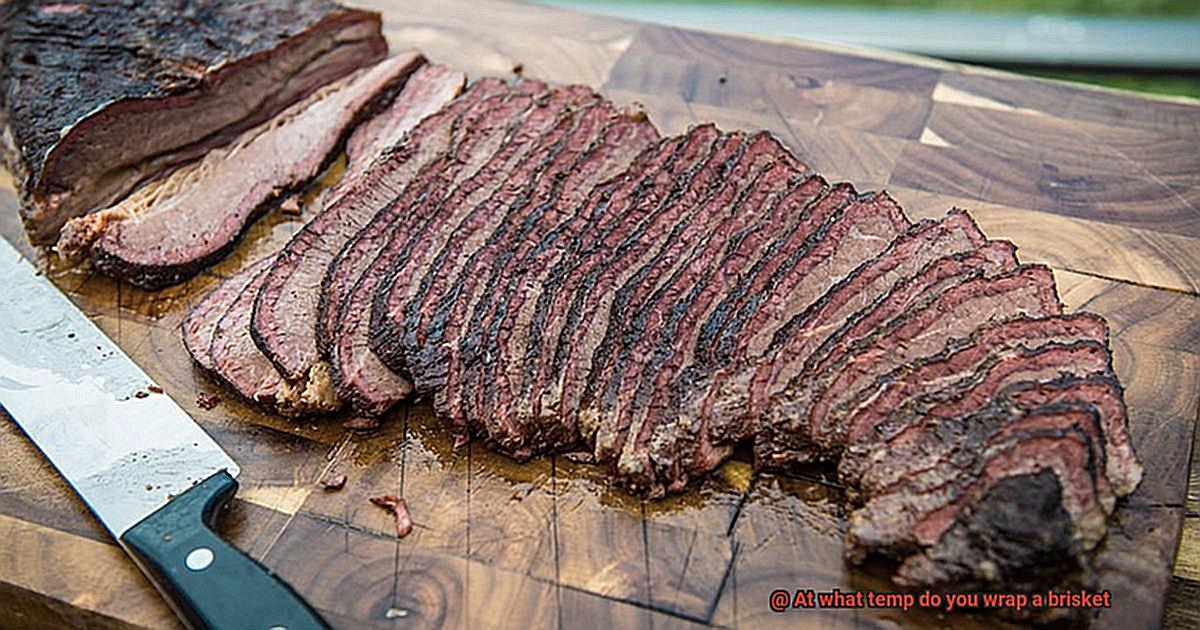
Timing is Key
Timing is crucial when it comes to wrapping a brisket. You should wait until the brisket has reached an internal temperature of around 160-170°F before wrapping it. This usually happens around the 6-7 hour mark of cooking, depending on the size of the brisket and the cooking method being used. Wrapping too early can result in a tough and dry brisket.
Why Wrap?
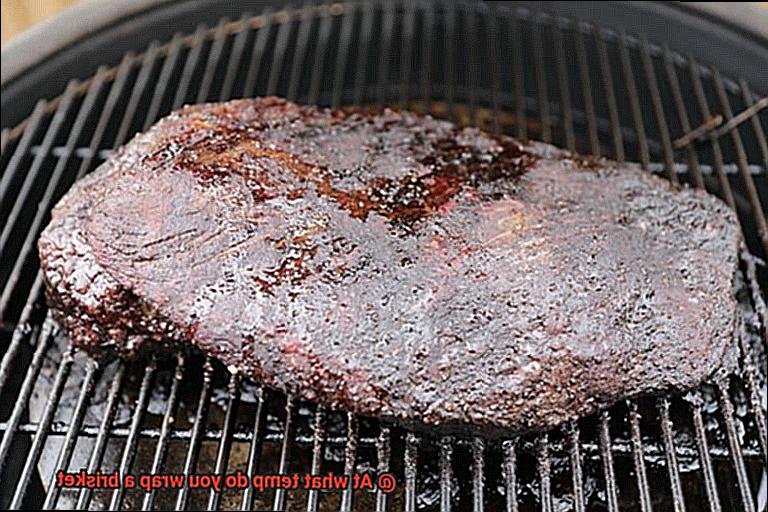
Wrapping the brisket in foil or butcher paper helps keep the meat moist and tender, while also speeding up the cooking process. It creates a steamy environment that helps break down the tough connective tissue in the meat, allowing it to cook faster. The result is a more tender and succulent brisket.
Tight Seal
When wrapping the brisket, it’s important to use a tight seal to prevent any steam from escaping. This can be achieved by wrapping the meat with multiple layers of foil or butcher paper, or by wrapping it tightly in a single layer and then placing it in a disposable aluminum pan with a tight-fitting lid. A tight seal ensures that the meat stays moist and doesn’t dry out.
Add Some Liquid
Adding some additional liquid before sealing up the brisket can enhance its flavor and keep it moist throughout the cooking process. This can be beef broth, apple juice, beer, or any other flavorful liquid. The added liquid will also help create more steam and keep the brisket moist.
Return to Smoker
Once wrapped, return the brisket to the smoker or grill with its fat side facing up. This will allow the fat to render down into the meat as it cooks, adding flavor and moisture. It’s also recommended to place a drip pan underneath the brisket to catch any drippings and prevent flare-ups. Keeping the fat side up ensures that the meat stays moist and flavorful.
How to Monitor the Internal Temperature of a Brisket
Smoking a brisket is an art form that requires a delicate balance of time, temperature, and patience. One of the most important aspects of smoking a brisket is monitoring its internal temperature. Here are five sub-sections on how to master this crucial step:
Choose the Right Thermometer
To ensure accurate readings, invest in a reliable meat thermometer. Instant-read thermometers are basic but leave-in and wireless models offer convenience and accuracy. However, a probe thermometer is the most recommended type to use for monitoring internal temperature. This type of thermometer can be inserted into the thickest part of the meat without opening the smoker or grill.
Probe Placement Is Key
Make sure to insert the probe into the thickest part of the meat, away from any bones or fat. Doing this will give you an accurate reading of the temperature and prevent you from overcooking or undercooking your brisket.
Remove Moisture Before Inserting the Thermometer
Before inserting the thermometer probe, remove any excess moisture from the surface of the brisket. Moisture can interfere with accurate temperature readings and cause your brisket to become tough or dry. Patting it dry with paper towels is an easy solution.
Monitor Regularly
As your brisket cooks, monitor its internal temperature regularly using your thermometer or probe thermometer. For a brisket cooked low and slow, aim for an internal temperature of around 195-205°F for optimal tenderness and juiciness. Keep in mind that different cooking methods may require slightly different temperatures.
Wrap at the Right Time
Once your brisket has reached its desired internal temperature, it’s time to wrap it in foil or butcher paper. Wrapping helps retain moisture and prevent overcooking. The wrapping process typically occurs around the 160-170°F mark, but some pitmasters prefer to wait until 180-190°F for a more flavorful bark. Either way, timing is crucial, so pay close attention to your thermometer readings.
DjI0S0ZmRfc” >
Conclusion
Smoking a brisket is no easy feat. It requires an artful balance of patience, skill, and knowledge. One popular technique among pitmasters is to wrap the brisket mid-cook in order to lock in moisture and tenderize the meat. But timing is everything when it comes to achieving the perfect cook.
Most experts agree that wrapping your brisket at an internal temperature of around 160-170°F is ideal, although this can vary depending on the size of your cut and cooking method. The benefits of wrapping are numerous: it helps retain moisture, speeds up cooking time, and allows for flavor infusion into the meat.
But choosing the right wrapping material and ensuring a tight seal are just as important for keeping your brisket juicy and tender throughout the cooking process. To achieve optimal tenderness and juiciness, monitoring your brisket’s internal temperature with a reliable thermometer or probe thermometer is crucial.
Probe placement, removing excess moisture before inserting the thermometer, monitoring regularly, and wrapping at the right time are all key factors to keep in mind. And while mastering this technique may take practice and experimentation, following these expert tips will set you well on your way to smoking a mouth-watering brisket that will have everyone clamoring for seconds.

